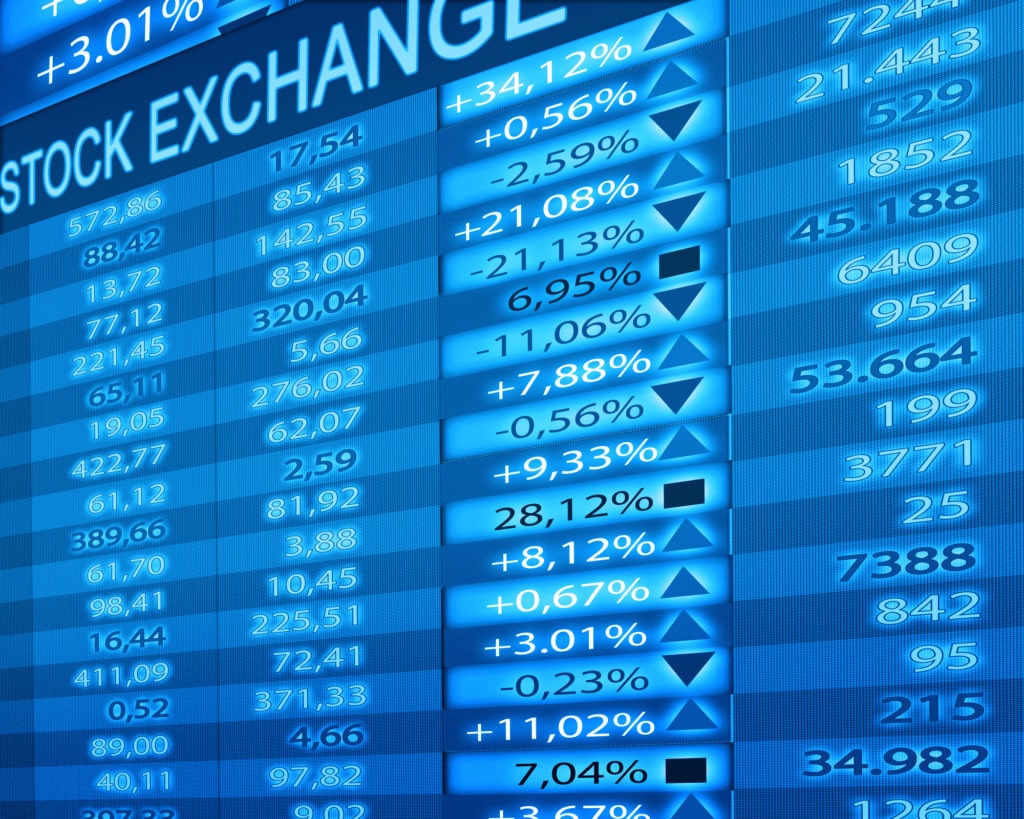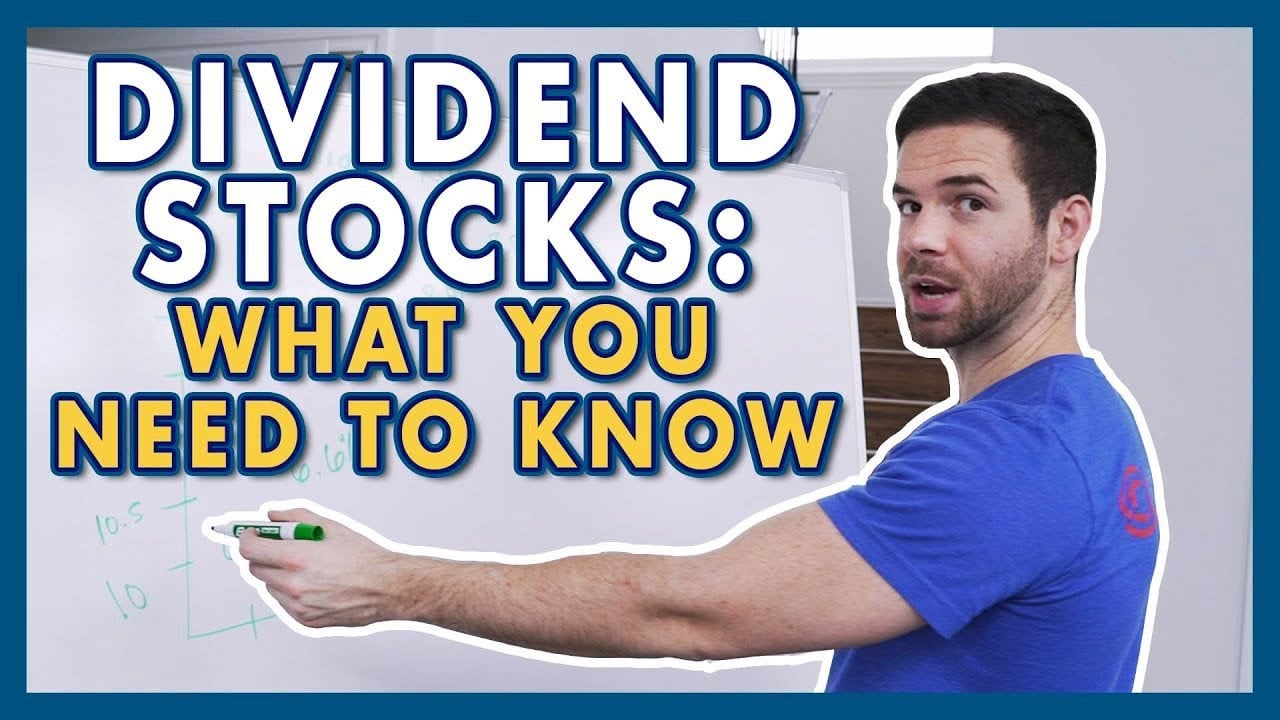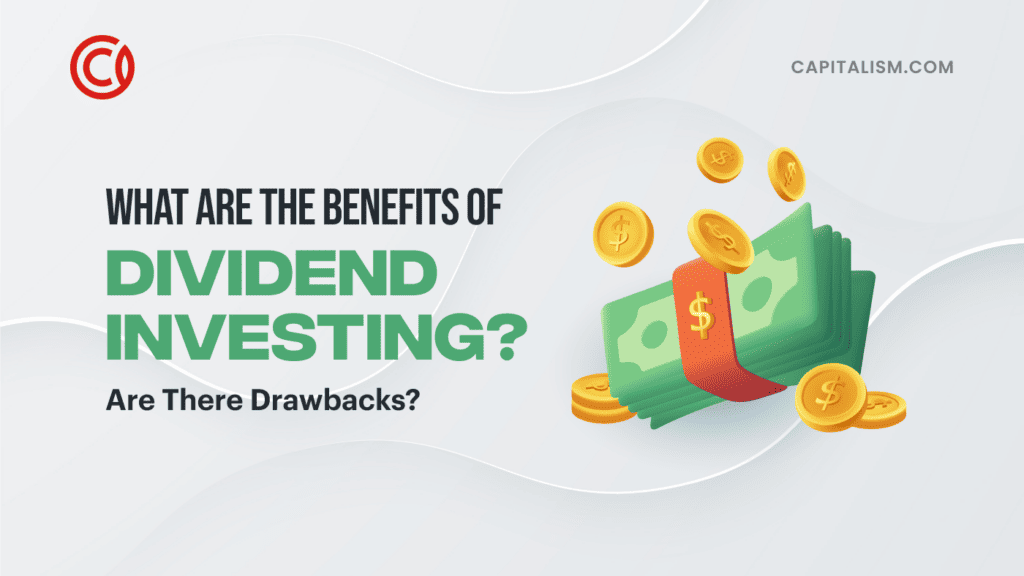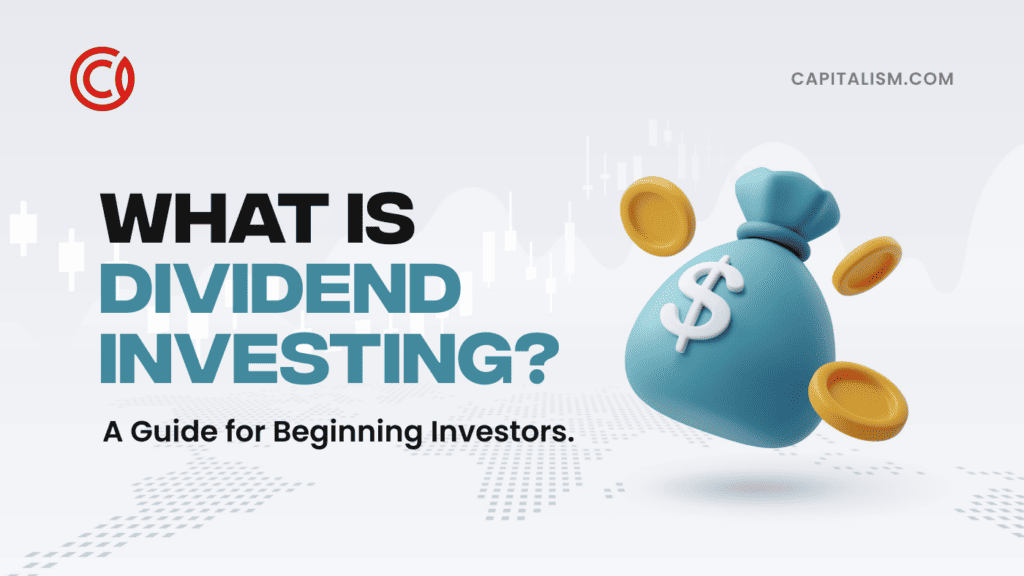You've heard it before, but I'm going to tell you again. You really should be investing your money in the stock market.
If you have spare cash that's just sitting in the bank, you're losing out on massive gains. In this article, we're going to talk about dividends. It's our mission to convince you to start putting your money to work for you.
And right now, dividend investing can be hugely profitable after COVID-19 gets under control. Take this opportunity to learn all you can about stocks that pay dividends so you can get started ASAP!
What is a Dividend?
A dividend represents the share of your ownership in a company's profits. Many companies pay dividends to investors on a set basis, usually quarterly.
Not all companies issue dividends when you buy stock. Instead, some companies choose to reinvest their profits in projects the Board believes will increase earnings growth.
Here's a quick breakdown of how dividends work.
If a company declares a $0.50 quarterly dividend payment and you own 100 shares, you will receive $50 each quarter or $200 annually.
These factors affect your dividend payment:
- The number of shares you own and
- The dividend yield per share
That means the larger the dividend yield, and the more shares you own, the larger your dividend payment will be.
The Different Types of Dividends
There are different types of dividends that you may not know about. Here is a breakdown of each type:
#1 Ordinary Dividends
Ordinary dividends are the most common type of dividend, and it's what we'll be exploring mostly within this article. An ordinary dividend is precisely what we explained in the scenario earlier: a company pays cash to its investors on a set schedule.
#2 Stock Dividends
Unlike ordinary dividends, which pay out in cash, stocks that pay dividends do so in more shares. That means a company will compensate you by issuing you additional shares of stock. Many companies opt for this type of dividend payment when they're trying to save capital. You can then reinvest this capital back into the company to increase growth and innovation.
#3 Hybrid and Property Dividends
Hybrid and property dividends are uncommon, and, as the name suggests, these stocks that pay dividends are a hybrid of sorts. Investors receive a combination of cash (like an ordinary dividend) and stock (like a stock dividend).
Also, the company may pay their investors in property. That means the investor may own company property or other assets that hold monetary value.

#4 Special Dividends
Special dividends are another type of dividend, which companies rarely issue. In some instances, a company may issue an additional dividend if it had a profitable quarter.
Think of these stocks that pay dividends as a performance bonus check you receive when your boss recognizes the great work you're doing. It's just a little extra icing on top.
Costco is one example who has paid special dividends in the past, including a $7 special dividend in 2012 and 2017. "We always think about when the right time might be to do a special dividend." said Costco CEO Craig Jelinek in a sit-down with CNBC, "We have no plans right at the moment, but we always — we'll always look at that."
The Different Types of Dividend Stocks
Similar to how there are different types of dividends, there are also different types of stocks that pay dividends. Here is a brief explanation of each type:
- Dividend Kings: Companies that have consecutively increased their dividend payments for at least 50 years (these companies have been around and are going strong).
- Dividend Aristocrats. 50 stocks on a list of companies that have consecutively increased their dividend payments for at least 25 years.
- And finally, Dividend Achievers. 274 stocks that belong to companies that have consecutively increased their dividend payments for at least ten years.
When Do Dividends Get Paid?
To understand when dividends get paid, you'll want to familiarize yourself with the following terminology:
- Declaration Date: This is the day the company announces when they will be issuing dividend payments.
- Record Date: If you are a registered owner of this company's stock, you will receive a dividend.
- Ex-Dividend Date: Any shares purchased on or after this date does NOT guarantee that the buyer will partake in the upcoming declared dividend payment.
- Payment Date: This is the actual date the company issues the dividend payments.
The declaration date and the ex-dividend date are worth remembering. So long as you purchase a share by the ex-dividend date, you should be eligible for the dividend payment on the upcoming declared date.

How Often are Dividends Paid?
Earlier, we mentioned how companies issue dividends on a set schedule. A unique thing to note about dividend-paying stocks is that payment schedules vary by company. Here are the most common payment schedules:
- Annually (once per year)
- Semi-annually (twice per year)
- Quarterly (four times per year)
- Monthly (12 times per year)
Most companies pay their dividends quarterly. But you will also see many companies issue dividends annually or semi-annually. There are also a large number of companies who opt for paying dividends monthly, as well.
There are no regulations where a company must adhere to a specific dividend schedule. Though most companies distribute quarterly dividends. They must report their quarterly earnings anyway.
How Are Dividend Returns Measured?
When evaluating a stock, it's easy to see why most eyes jump to the dividend yield. After all, the dividend yield tells you how much you'll get paid when the declaration date rolls around.
So, how is a dividend yield measured?
Let's look at an example:
If Company X's quarterly payout of $1.00 is consistent, the company will pay dividends of $4.00 per share in dividends for the year.
And if Company X's stock trades for $100 per share, the dividend yield is 4%.
$4.00 / $100 = 4%
There are other factors to determine a stock's value, but most investors put dividend yield high up on their priority lists. After all, the higher the dividend yield, the greater the profits you'll reap.
But you should also be mindful of other attributes, like industry health and consistent payment history. We'll be exploring more of these factors in an upcoming section.
What is a Dividend Payout Ratio?

The dividend payout ratio (often abbreviated DPR) measures how much of a company's earnings pay out to its shareholders through dividends. You can calculate the DPR by dividing the total dividends by the company's net income.
Let's look at an example:
If Company Y distributes quarterly dividends of $0.50 per share, it will total an annual dividend payment of $2.00 per share. Company Y's net earnings that year are $10 per share.
$2 / $10 = 20%
That means Company Y distributed 20% of its net income as dividends paid out to its shareholders. When evaluating a stock, a company's dividend payout ratio can reveal a lot.
A high payout ratio can be concerning. If the payout ratio exceeds 100%, it tells you that the company is paying more in dividends than what it earns. This is a major red flag, as a company can't maintain that trend in the long-term; it's not sustainable.
A lower dividend payout ratio, in contrast, shows that the company is paying out less in dividends. Lower payout ratios tend to correlate with dividend payment consistency. A company is less likely to miss a payment date, which increases its investment cash flow predictability.
Dividend Reinvestment Plans (DRIP)
If you're brand new to investing, I'm sure all this information might have you feeling overwhelmed. If you want to make learning how to invest in dividend stocks a little simpler, consider enrolling in a dividend reinvestment plan.
Enrolling in a dividend reinvestment plan works well if you're not using your investment earnings for living expenses. In a reinvestment plan, your dividends will no longer deposit into your brokerage account. Instead, those dividends reinvest back into the stock market to purchase additional shares of that company.
But why would you want to do this?
There are many reasons why DRIPs are beneficial, especially for beginner investors:
- Simple to Sign Up: Although the "dividend reinvestment plan" sounds like a sophisticated term, it's quite easy to get started. You can sign up online within minutes.
- Convenience: You don't have to go through the hassle of buying additional shares yourself. DRIPs let you automate the entire process, so you can sit back and let your dividends reinvest themselves.
- Purchase Fractional Shares: In some cases, you don't have to purchase an entire individual stock. DRIPs let you own a fraction of a share, allowing you to diversify and grow your portfolio.
- Compounding Growth: We mention this term a lot because it's critical. When you reinvest your dividends, you let your earnings and your earning's earnings work for you. This allows your investments to grow at a faster rate.
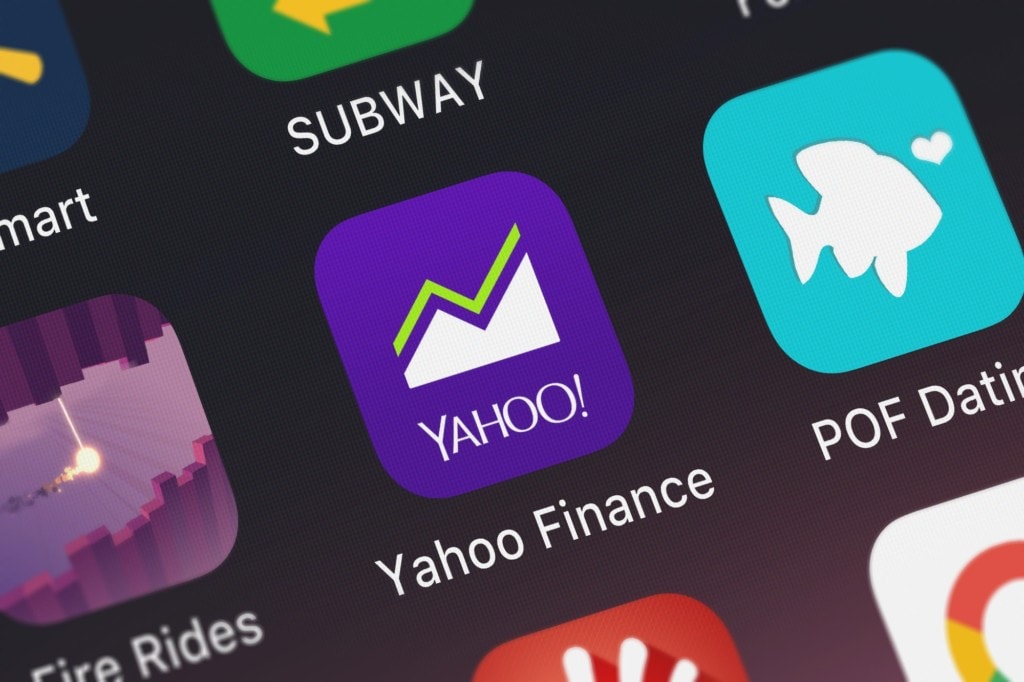
How Do You Know What Stocks Pay Dividends?
We mentioned earlier how not all stocks pay dividends. How, then can you determine which stocks pay dividends and which don't?
It's easier than you think. All you need to do is visit the platform you use to research stocks. You can use stock market sites like:
- Yahoo Finance
- The Motley Fool
- Metastock
If there's a specific stock you want to research, you can by the company name or its ticker symbol. When you click on a stock to review its profile, you'll want to look for "dividend yield" (sometimes abbreviated "div yield").
If the number next to "Div Yield" is above 0%, then that company pays dividends. You can also view that company's dividend payment history to determine whether dividends distribute an annual, semi-annual, quarterly, or monthly basis.
Are Dividends Worth It?
If you do your research and invest wisely, then yes, dividends are worthwhile.
Dividends, especially, tend to be popular among retirement planners and retirees. Dividend-paying stocks offer consistent income and compounds in growth over time. That's why retirement accounts, like the 401k, invest in dividend-paying stocks.
But building a substantial cash-flow on dividends alone takes time. The sooner you start, the better. By the time you retire, you'll receive consistent income even though you're not actively working.
So, start investing now. Build a robust and diversified portfolio and reinvest your dividends to maximize your growth.
But, of course, this shouldn't suggest that dividends are without risks.
Let's look at the financial meltdown, for example, that occurred from 2008 to 2009. Nearly all of the major banks eliminated their dividend payouts — even though they had a reputation for paying their dividends consistently.
What does this tell you?
Dividends, like many investments, are vulnerable to current economic and market conditions. Just because a company has a spotless track record does not guarantee a dividend payment.
Still, this shouldn't scare you from investing in dividend-paying stocks. If you make an effort to invest in the best long-term dividend stocks you can, your profits will often outweigh any temporary setbacks you encounter.
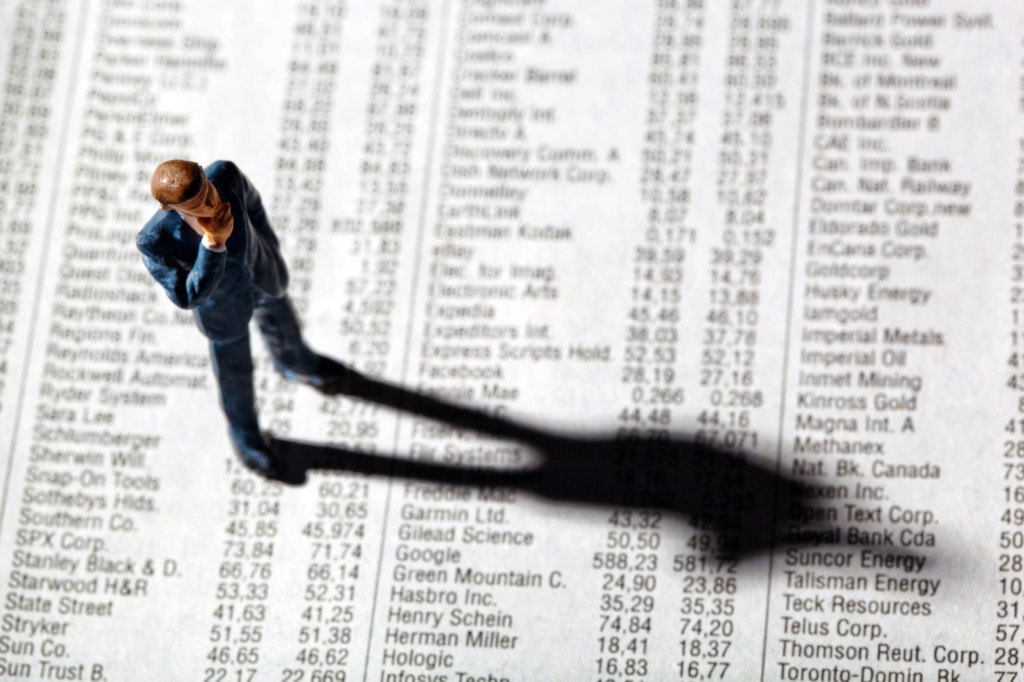
Dividend Yield is NOT Always King
It's easy to see why many investors judge a stock's value by their dividend yield. After all, it does indicate the payment you can expect to receive when the payment declaration date arrives.
Don't make the beginner mistake, however, of focusing only on the dividend yield. A high dividend yield alone isn't enough to qualify as one of the best dividend stocks to buy and hold.
A stock could have a significant dividend yield but is on the verge of bankruptcy. They may halt dividend payments entirely. Because of this, there are several factors you should consider when evaluating the value of a dividend-paying stock.
4 Factors to Help You Evaluate a Dividend-Paying Stock
There are thousands upon thousands of dividend-paying stocks out there. How can you separate the "good" stocks from the "bad" ones?
When starting, equip yourself with as much knowledge as possible to make wise and informed investment decisions. Here are four factors to help you judge a stock:
Is the Company Reporting Consistent Profits?
Investing is a long-term strategy. It's best to seek companies that have grown over the years and that you can grow with. Do this by reviewing the company's past profits.
If a company is not steadily profitable, you might want to remove it from your list. It's unlikely that a declining company will stand against time.
Instead, place your bets on a company that has lasted and consistently reports strong numbers. This tells you that the company has the necessary infrastructure to continue to consolidate its success and build upon them.
Does the Company Have a Strong Cash Flow Generation?
When a company becomes more profitable over time, you'll often see this growth reflected in the dividend yield. Look for companies that consistently increase their dividends over the years.
Even if the growth is minor, a growing dividend yield tells you that it has a strong foundation. It will continue to grow over the years, and you can often expect your dividend payments to increase.
As you can see, history is a reliable indicator of whether a stock is a good fit or not for your portfolio.

Is the Company Burdened With Excessive Debt?
Let's look at the opposite side of the spectrum. If the company isn't reporting consistent profits, why is that?
Perhaps it's because the company has taken on excessive debt. You'll want to research the company's debt-to-equity ratio. If the ratio is higher, that is an immediate red flag that the stock is high-risk.
If you decide to invest in this type of stock, know that the company may eventually slash dividend payments. You can expect that the money paid out in dividends may get reallocated to pay down the debt.
How is the Current Industry's Health?
We looked at elements specific to the company itself. But let's zoom out and look at the bigger picture. What about the industry an individual company is operating within? If the industry is faring poorly, it's reasonable to predict that the individual company may get hit.
Let's take a look at our current situation with coronavirus. The oil and gas industry is severely affected by COVID-19. Since more people are on lock-down, the demand for gas has plummeted. This is why we're seeing the values of oil stocks declining over the past few months.
When researching stocks, look for connections between current events, industry health, and the companies. All of these factors impact each other. They can help you determine whether company stock is a wise investment at a specific moment in time.
Benefits of Dividend-Paying Stocks
We've discussed much what a dividend-paying stock is. The question that might be looming on your mind might be why you should invest in dividend-paying stocks. Here's why:
#1 Gain Value in Two Ways
When you own a dividend-paying share: you profit from the underlying stock and the regular dividend distributions. That means when an underlying stock increases in value, you can potentially sell it at a profit. But if you hold onto that stock, you benefit from the underlying asset's increased value and reap profit through the dividends.

#2 Steady Income Stream
The most obvious advantage is that the company pays you. For other types of stocks, you don't profit until you sell the underlying asset. With dividend-paying stocks, however, you get paid on a regular schedule.
#3 Compounding Growth
When dividends get distributed, you can do two things with it. You can pocket the cash, or you can reinvest those dividends back in the stock market.
Reinvesting your dividends lets you buy additional shares, which can potentially reward you with more income in the future.
That's why many people call the stock market a long-term game. To truly realize the advantage of compounding growth, you need years to see your portfolio flourish.
What are the Best Dividend Stocks for 2020?
Thinking about adding dividend-paying stocks to your portfolio? Below are the top 25 dividend stocks you can consider investing in.
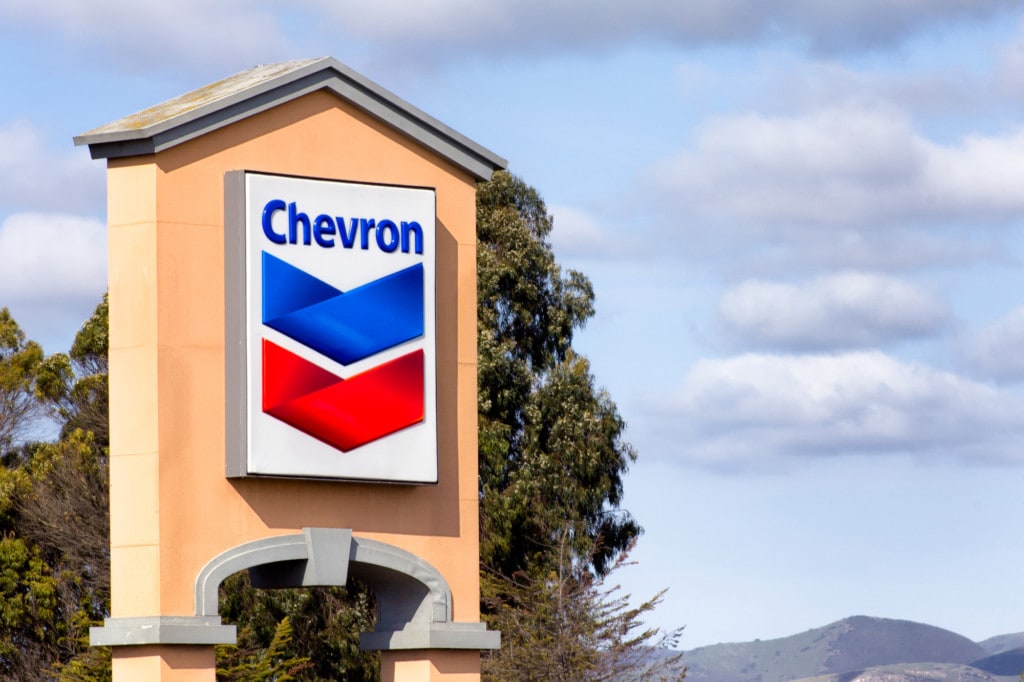
What Stocks Pay the Highest Dividends?
- National Health Investors Inc. (NHI) Dividend Yield: 9.44%
- Altria Group Inc. (MO) Dividend Yield: 9.18%
- Universal Corp (UVV) Dividend Yield: 7.34%
- Canadian Imperial Bank of Commerce (CM) Dividend Yield: 7.41%
- The Bank of Nova Scotia (BNS) Dividend Yield: 7.20%
- Bank of Montreal (BMO) Dividend Yield: 6.00%
- Principal Financial Group Inc.(PFG) Dividend Yield: 6.62%
- BCE Inc.(BCE) Dividend Yield: 6.13%
- Chevron Corp. (CVX) Dividend Yield: 5.79%
- International Business Machines Corp. (IBM) Dividend Yield: 5.57%
- Seagate Technology Plc (STX) Dividend Yield: 5.44%
- Boston Properties Inc. (BXP) Dividend Yield: 5.23%
- Royal Bank of Canada (RY) Dividend Yield: 5.19%
- TC Energy Corp. (TRP) Dividend Yield: 5.17%
- Omnicom Group Inc. (OMC) Dividend Yield: 5.11%
- Evans Bancorp Inc. (EVBN) Dividend Yield: 4.95%
- Sun Life Financial Inc. (SLF) Dividend Yield: 4.87%
- Bank of Hawaii Corp. (BOH) Dividend Yield: 4.59%
- Public Storage (PSA) Dividend Yield: 4.55%
- Cullen/Frost Bankers Inc. (CFR) Dividend Yield: 4.42%
- Whirlpool Corp. (WHR) Dividend Yield: 4.41%
- 3M (MMM) Dividend Yield; 4.15%
- Pfizer Inc. (PFE) Dividend Yield: 4.03%
- General Mills (GIS) Dividend Yield; 3.14%
- Proctor & Gamble (PG) Dividend Yield: 2.76%
The Dogs of the Dow: What Are the Top 10 Dividend Paying Stocks?
Here is a list of high dividend stocks 2020 featured on the Dow Jones Industrial Average:
- Exxon Mobil (XOM) Dividend Yield: 8.29%
- Dow Inc (DOW) Dividend Yield: 8.26%
- Chevron (CVX) Dividend Yield: 5.79%
- IBM Corp (IBM) Dividend Yield: 5.57%
- Boeing (BA) Dividend Yield: 6.85%
- Walgreens Boots Alliance (WBA) Dividend Yield: 4.77%
- Verizon (VZ) Dividend Yield: 4.50%
- JPMorgan Chase (JPM) Dividend Yield: 4.19%
- Pfizer (PFE) Dividend Yield: 4.03%
- Coca-Cola (KO) Dividend Yield: 3.79%

Are Dividends Taxed?
Yes, you have to pay taxes on the dividends you earn through your stock investments. The IRS considers dividends to be income, and you will pay taxes accordingly. It counts as income even if you reinvest your dividends, whether in the same company or a different one. Also, there are tax requirements specific to ordinary dividends and qualified dividends.
Ordinary vs. Qualified Dividends
Ordinary dividends (also called non qualified or unqualified dividends) tax at ordinary income rates. In 2019, the dividend tax rates ranged from 10% to 37%. You pay more or less, depending on which tax bracket you belonged to.
Qualified dividends, in contrast, are taxed at long-term capital gains rates. Capital gains tax rates tend to be lower than ordinary income tax rates, even if you belong to a higher tax bracket.
If you're a single filer and made $35,000, for example, then you'd be subject to a 12% tax rate or a 15% capital gains rate. If you're a single filer and made $90,000 — significantly more — then you'd be subject to a 24% tax rate or a 15% capital gains rate.
To be a qualified dividend, it must meet the following criteria:
- Dividends paid out by U.S. companies or qualified foreign corporations.
- Stocks must be tradeable on an American exchange.
- You must hold the stock for 60+ days in the 121-days preceding the ex-dividend date.
Reporting Dividends on Your Tax Return
There are a variety of forms you'll need to review and complete when reporting your dividends on your tax return including:
- Form 1099-DIV
- Form 1040
- Then there's Form 1040-SR (for seniors)
- And finally, Form 1040-NR (for nonresidents)
If you're brand new to investing, it may be worth working with a financial advisor or account. These financial professionals will help you understand your tax obligations and ensure that you're fulfilling your taxpayer responsibilities.

What is Apple's Dividend?
According to CNBC, 64% of Americans own an Apple product, and the average American household owns more than two Apple products. Apple has skyrocketed to popularity and is now a household brand. It's little surprise why so many people are curious about Apple stocks and dividends they offer.
Currently, Apple offers a dividend yield of 1.06%
Investing in Apple stocks right now has a few investors concerned. Investor's Business Daily notes how "iPhone sales have slowed as users hold on to their handsets for longer periods between upgrades." In the March 2020 quarter, iPhone sales fell 6.7% to $28.96 billion. Apple's upcoming 5G iPhone release due Fall 2020, though, has investors looking optimistic.
Does Coca Cola Pay a Dividend?
Yes, Coca Cola stocks pay quarterly dividends.
Coca Cola has been a famous brand among investors because of how the company has stood firm throughout the years. The Coca-Cola company has been paying dividends continuously since 1920. They're steadily closing in on 100 years! The Motley Fool even describes Coca Cola as a "retiree's dream stock!"
The reason why Coca-Cola stands strong is that it's one of the largest nonalcoholic beverage companies globally. They sell a variety of products, including Coca Cola, Diet Coke, Sprite, Minute Maid, Dasani, and more. They have a recognizable brand and a loyal customer base, even when toe-to-toe with Pepsi, their biggest competitor. Coca Cola brought in annual revenue of $37.27 billion for 2019.

Currently, Coca Cola's dividend yield is 3.79%. According to NASDAQ, here is a payment history of Coca Cola's most recent payouts:
- 03/13/2020 - $0.41
- 11/29/2019 - $0.40
- 09/13/2019 - $0.40
- 06/13/2019 - $0.40
If you look at the most recent payment in March 2020, you'll see that it increased — another increase in 58 consecutive years!
The Bottom Line
Dividends are a great way to add another income stream to your portfolio. As you learned, dividends can be useful in retirement, especially if you invest in stocks that pay dividends monthly.
We're so thrilled to know that you are expanding your knowledge of investing. The best type of investor that you can be is an informed investor. As you grow your knowledge and build your experience, you'll eventually evolve into a savvy investor with a sophisticated portfolio.
Keep it up for long enough, and who knows? Perhaps stock investing will be one of the keys to unlocking a future of financial freedom for you. If you’d like to learn more about how to create a financial life where you call the shots, check out this free video series we’ve made for you.
Best of luck investing in stocks that pay dividends and all of your investments!
Disclaimer: At Capitalism.com, we do our best to provide accurate information on finance and investing. But we are NOT certified financial or legal professionals. Investing is not a one-size-fits-all, and the advice presented here may not apply to your unique situation. We do NOT guarantee that any of the advice will result in you getting filthy rich (we still have yet to crack the secret code to unlimited riches). We recommend that you use this article as a starting point to do your own research and due diligence, which may include consulting with a qualified financial professional.
